
| Lancaster |
| DESCRIPTION: Muddy Run is a pumped-storage (hydroelectric) generating facility owned and operated by Philadelphia Electric Company (PECO).The 985-acre pumped-storage reservoir is surrounded by a 500-acre recreation park, and an additional 1,900 acres of old fields, woodland, cultivated fields and plantings by the Pennsylvania Game Commission and Soil Conservation Service. |
DIRECTIONS: To reach Muddy Run Park from Lancaster follow US 222 south to the village of Willow Street and then take PA 272 south to PA 372. Turn right onto PA 372. Follow PA 372 for 3.6 miles and turn left on Bethesda Church Road West at the Muddy Run Park sign. At the T turn left and enter the Park. The Park is open throughout the year from 7:30 a.m. until sunset. For more information contact: The following route will take you to the major accessible birding areas. For convenience the route starts and ends at the park entrance. Areas enclosed by an 8-foot-high chainlink fence are not open to the public. Please respect this policy. These areas are off limits. At the Park entrance, and anywhere in the Muddy Run area, check the fence tops and utility wires for Eastern Bluebird. The majority of birding areas within the Recreation Park can be reached by two established trails: the ⅓-mile Trail of Changing Landscapes, which originates at the Park Office; and the 3-mile Lakeshore Hiking Trail, a continuous, yellow-blazed trail which circles the 100-acre Recreation Lake. Pick up a trail map and checklist of the birds of Southern Lancaster County in the Park Office. Look for nesting Orchard and Baltimore orioles from May through August and Cedar Waxwing in all seasons along Locust Lane at the beginning of the Trail of Changing Landscapes. Check the mudflats where a small creek enters the lake for an occasional shorebird. Since there is very little good shorebird habitat at Muddy Run, take advantage of it when you find it. The remainder of the trail along the creek is wooded and can be very good for viewing migrant warblers and other passerines. The Lakeshore Hiking Trail leads to a variety of habitats: open water, shoreline, woodland, and old-field. Great Horned Owl nest regularly in the woodlands. The old-field habitat contains a variety of birds throughout the year but is most interesting during the breeding season. The following species can be found regularly: Eastern Kingbird, Willow Flycatcher, House Wren, Northern Mockingbird, Gray Catbird, Brown Thrasher, Eastern Bluebird, White-eyed Vireo, Yellow and Prairie warblers, Common Yellowthroat, Yellow-breasted Chat, Eastern Meadowlark, Red-winged Blackbird, Orchard and Baltimore orioles, Northern Cardinal, Blue Grosbeak, Indigo Bunting, American Goldfinch, and Field and Song sparrows. Unfortunately this is no longer a reliable location for Northern Bobwhite. Great Blue and Green herons and Solitary and Spotted sandpipers feed along the shoreline. Watch for other aquatic species in the open water, especially Pied-billed Grebe, Red-breasted and Hooded mergansers, American Coot, and occasional diving ducks. Drive out of the Park to PA 372. Turn right and go 1.1 miles. Make another right onto Susquehannock Drive. Proceed 0.8 mile. Stop at the bottom of the hill where you see Muddy Run Cove, a long arm of the Recreation Lake, on your right. Check for waterfowl. In winter, the stand of White Pine and Red Juniper on the south side of the cove may contain roosting Long-eared and Short-eared owls. In addition to the owls, expect Black-capped and Carolina chickadees, Tufted Titmouse, White-breasted and Red-breasted nuthatches, Hermit Thrush, and Golden-crowned and Ruby-crowned kinglets during the winter months. This area is part of the Recreation Park; access is on foot via the Lakeshore Hiking Trail. Proceed south on Susquehannock Drive. The next intersection is Silver Spring Road, at which point you may choose one of two routes to the next destination, River Road. Either continue south on Susquehannock Drive and then turn right on River Road, or turn right on Silver Spring Road and follow it to the intersection with River Road. The first alternative takes you through open agricultural habit. Breeding species include Horned Lark and Savannah, Grasshopper, and Vesper sparrows. A prime location for all four species is in the fields southwest of the intersection of Susquehannock Drive and River Road. The best way to reach this area is to proceed south on Susquehannock Drive past River Road to the top of the hill and check the fields to the west. This land is privately owned and is not part of the Muddy Run Project area. Please respect this property and the crops. Check all of these open fields for typical field species in the winter months, especially where manure has been freshly spread. The alternate route passes through a variety of habitats. This short stretch of Silver Spring Road is locally known as the "game road" because of the frequently large numbers of deer, rabbits, pheasants, and doves observed. Red Fox can sometimes be seen in the open fields to the east where the road curves sharply to the left. At the intersection of Silver Spring Road and River Road proceed west on River Road. The principal attraction along River Road is the pumped-storage reservoir to your right. Peak numbers of waterfowl normally occur during spring migration. The only time when species are likely to be absent is in January or February if the entire reservoir is ice-covered. Even during a severe cold spell the daily water-level fluctuations can create open water to which waterfowl return in a remarkably short time. The canal area rarely freezes. Stop at each vantage point along River Road from which you can see the reservoir. There are few good parking areas along this stretch. Pull off the road as far as possible in a safe place and be cautious of passing traffic. Please do not park in the middle of the road to scope from the car. Continue southwest along River Road to the intersection of Furniss Road. Park in the game commission parking lot on the left. Check the Russian Olive bushes in front of you. Then bird the large overgrown field beyond. Many of the old-field birds mentioned earlier nest here, especially Northern Bobwhite; Willow Flycatcher; Prairie Warbler; Yellow-breasted Chat; Blue Grosbeak; Indigo Bunting; and Field Sparrow. This area provides abundant habitat and food supply for migrant and wintering songbirds. Raptors which frequent this field during winter months include Northern Harrier, Red-tailed and Red-shouldered hawks, and American Kestrel. Continue along River Road for 0.2 mile to the next intersection. Turn left at the signs for Fisherman's Park. Note the fire trail on your right 0.2 mile from River Road; you will return to this spot later. Proceed down the steep, curvy road through the heavily wooded hillside to Muddy Run Fisherman's Park on the shores of the Susquehanna River. Yellow-throated Warbler sometimes nests near the mouth of Wissler Run or on one of the nearby islands. Park near the picnic pavilion. Just upriver is the Muddy Run Power Plant. Public rest rooms are located on the road to the right of the guard house. Birds most likely to be seen in this portion of the river are piscivorous (fish-eating) species. Certain species are present during all seasons, but the most productive time is during a very cold winter when most of the open water in the county, including the river, is frozen. Under these conditions thousands of these birds concentrate in this restricted area of open water. Grebes, diving ducks, all three species of merganser and a variety of gulls are attracted by the open water and abundant food supply. Young Gizzard Shad are weakened by the low water temperature and become easy prey. During warmer seasons also look for loons, cormorants, herons, egrets and terns. Caspian Terns frequent this area in April and from July into October. This is an excellent area to observe both spring and fall migration. Flying northeast in spring and southwest in fall, many raptors cross the river at this point. Waterfowl, gulls, and terns move directly up and down the river valley. The covered pavilion affords protection for birders during inclement weather. The tall trees and transmission towers on the Conowingo Islands serve as roost sites for hundreds of vultures and occasional Osprey, hawks, and eagles. Peregrine Falcon have also been observed from this point. Bald Eagle nest nearby and are regularly seen here. A walk up the road from the river can be productive for migrant songbirds and woodland breeding species. Breeding birds of special interest include Pileated Woodpecker, Acadian Flycatcher, Carolina Wren, Blue-gray Gnatcatcher, Wood Thrush, Yellow-throated Vireo, Northern Parula, Cerulean and Worm-eating warblers, Louisiana Waterthrush, Kentucky Warbler, and Scarlet Tanager. Ruffed Grouse have been seen from this road. As you near the top of the hill, look for the fire trail which starts on the left of the road (noted earlier). This is a one-lane gravel trail directly adjacent to a gas pipeline right-of-way. Park you car at the top of the hill near River Road and walk this trail (no vehicles allowed). This is one of the most productive songbird trails at Muddy Run, especially in spring and summer. An experienced birder can identify 50 or more species during a three-hour walk. Explore any side trails you encounter, especially those which go down toward the river. In addition to the species which can be found along the road leading from the river, the following birds nest along this trail: Northern Bobwhite, Yellow-billed and Black-billed cuckoos, Eastern Screech- and Great Horned owls, Ruby-throated Hummingbird, Red-bellied, Hairy and Downy woodpeckers, Northern Flicker, Eastern Kingbird, Great Crested Flycatcher, Least Flycatcher, Eastern Wood-Pewee, Barn and Cliff swallows, Fish Crow, White-eyed Vireo, Blue-winged, Yellow, Prairie, and Black-and-white, and Hooded warblers, American Redstart, Yellow-breasted Chat, Blue Grosbeak, Rufous-sided Towhee, and Orchard and Baltimore orioles. The main trail ends on the far side of the canal where the dam breast begins. To ensure the most favorable light conditions, walk the trail from either end, depending upon the time of day. The side trail marked "Canal Drain No. 14" is a consistently good area for Acadian Flycatcher and Worm-eating, Cerulean, and Hooded warblers. See the map for the location of this trail. From the canal end of the dam breast scope the reservoir and canal for aquatic species. Cliff Swallow sometime nest on the cement structures at the end of the canal, while Northern Rough-winged Swallow and Belted Kingfisher usually nest near the bridge which crosses the canal. Black and Turkey vultures frequently perch on the walls of the canal and surrounding structures. Drive slowly across the dam breast toward PA 372, watching for aquatic species on the reservoir and soaring birds of prey over the gorge between the dam and the river. A flock of Snow Bunting often stops during migration in November on the barren rocks and slopes of the dam breast. There are two more game commission parking lots with adjacent birding habitat. The first is at the far end of the dam breast, just before the intersection with PA 372. The areas adjacent to the parking lot contain the representative old-field species, including Prairie Warbler and Blue Grosbeak. The heavily wooded River Hills, laced with fire trails, contain most of the expected species, including some of the less common breeding warblers such as Cerulean, Worm-eating, Kentucky, Hooded, and American Redstart. To reach the next game commission parking lot, proceed to the stop sign at PA 372. Turn right. Continue for 0.8 mile, then turn right onto the first hard road. Drive 0.2 mile and park in the lot on the right. The unique habitat at this point consists of large plantings of White, Jack, and Austrian pines, and European Alder, broken by grassy strips and cultivated fields. In the spring and summer Northern Bobwhite, Carolina Wren, White-eyed Vireo, Blue-winged and Prairie warblers, Common Yellowthroat, Yellow-breasted Chat, Blue Grosbeak, Indigo Bunting, and Field Sparrow are fairly common. In fall and winter look for Sharp-shinned Hawk, Northern Bobwhite, Long-eared and Northern Saw-whet owls, Red-breasted Nuthatch, Golden-crowned and Ruby-crowned kinglets, American Robin, Cedar Waxwing, Yellow-rumped Warbler, and winter finches. Leave the parking lot, turn right on PA 372, and return to the entrance to Muddy Run Park. |
|
Maps - other than Google (Click on map for larger view) |
|
Sub-sites |
Photos 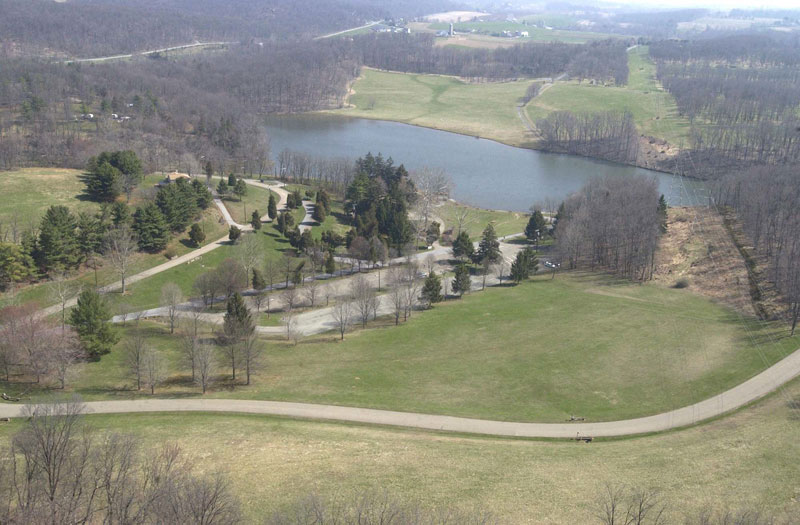
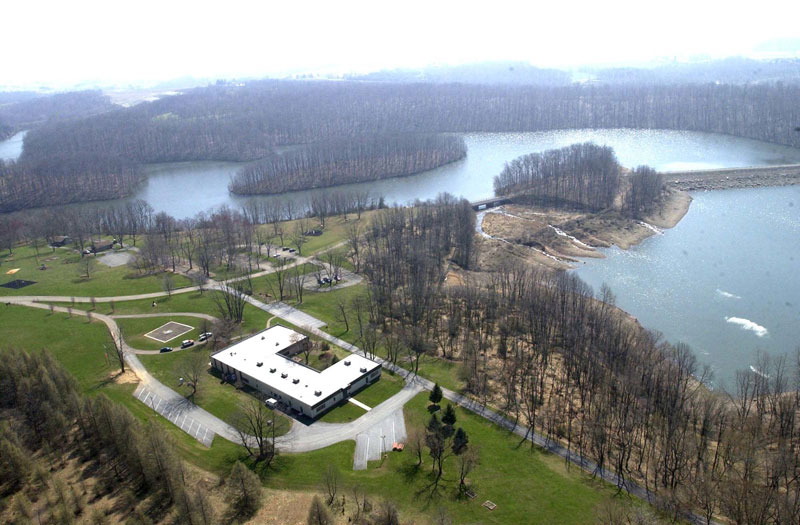
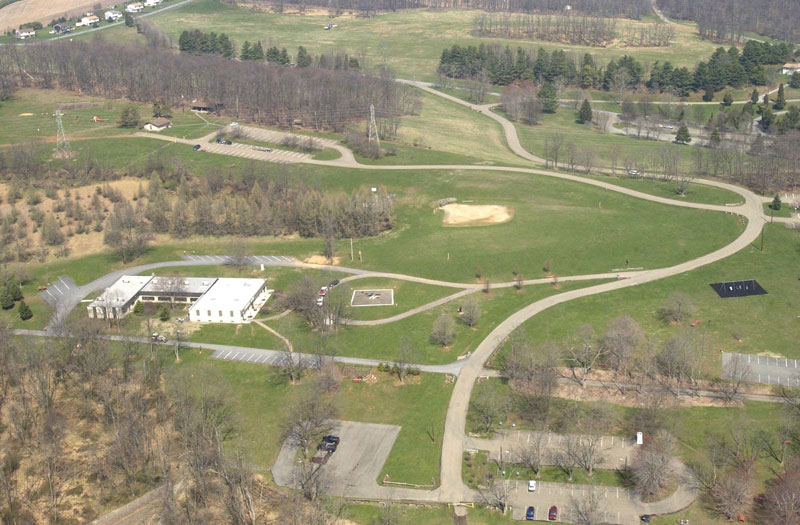
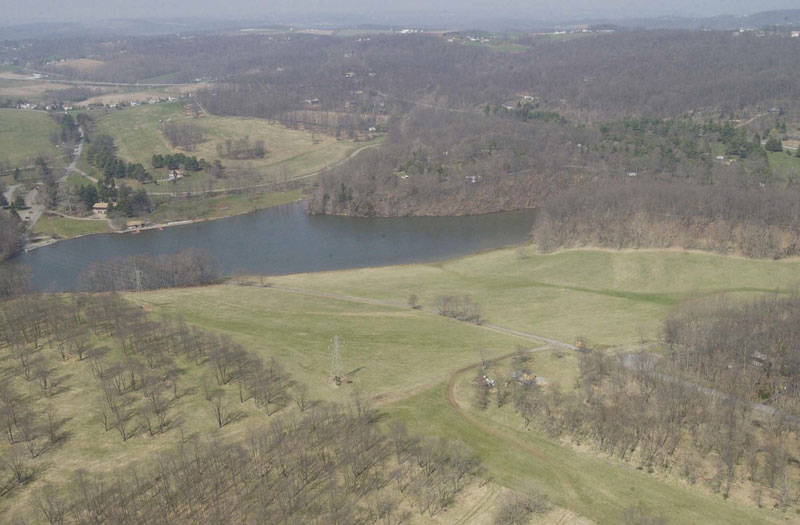
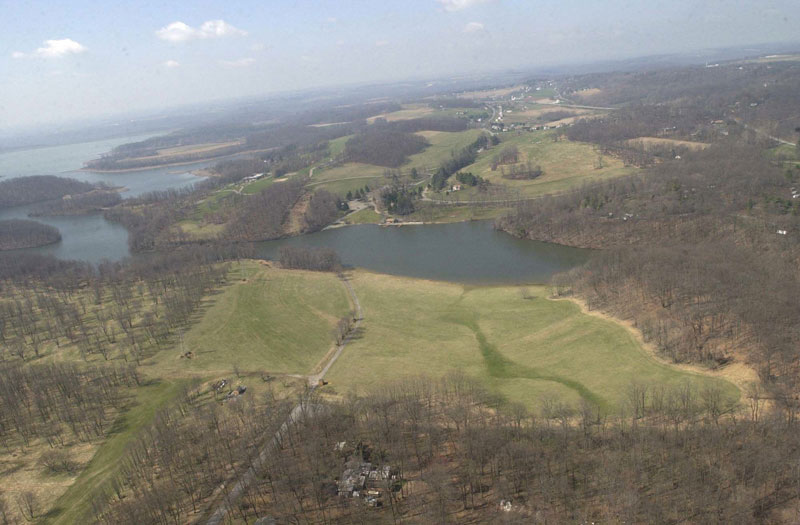
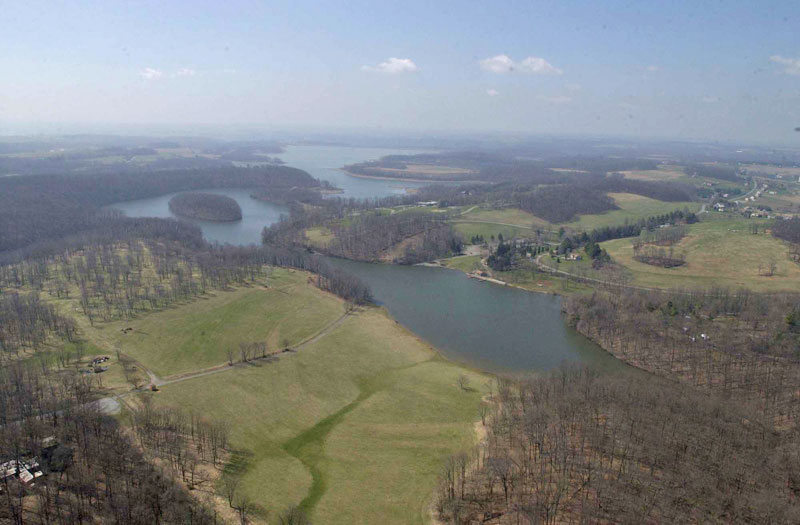
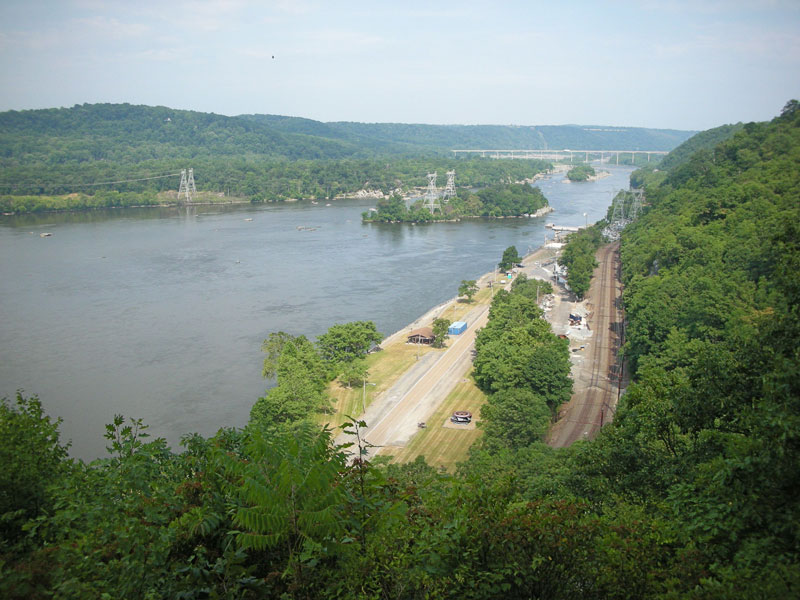
|
| Posted: 2009-10-24 00:00:00 Updated: |
